In Japan, belonging to groups is very important.
Good news! As an ALT on the JET Program, you are part of a group (your workplace).
But that doesn't mean you automatically fit in. Like any country, the new person has do things to show they're part of the team.
That's where etiquette comes in. Manners and customs are a society’s way of communicating "I belong here and want to be a helpful member."
Learning simple Japanese work culture etiquette will do this for you. It's a small investment that reaps big rewards. It demonstrates you're a team-player and builds solid working relationships.
Below I've laid out:
- 12 pieces of general Japanese business etiquette
- 4 pieces of ALT-specific advice
- 5 ideas for better communication
- 5 key concepts that help you understand the Japanese way of doing things
If you'd like to skip to a particular point, I've also put together a table of contents:
- Basic Japanese Work Culture Etiquette
- Advice for ALTs
- Communication
- Key Concepts
- You're Going to Screw up (and That's Okay)
Just want to start from the beginning? Okay, let's go.
Basic Japanese Work Culture Etiquette
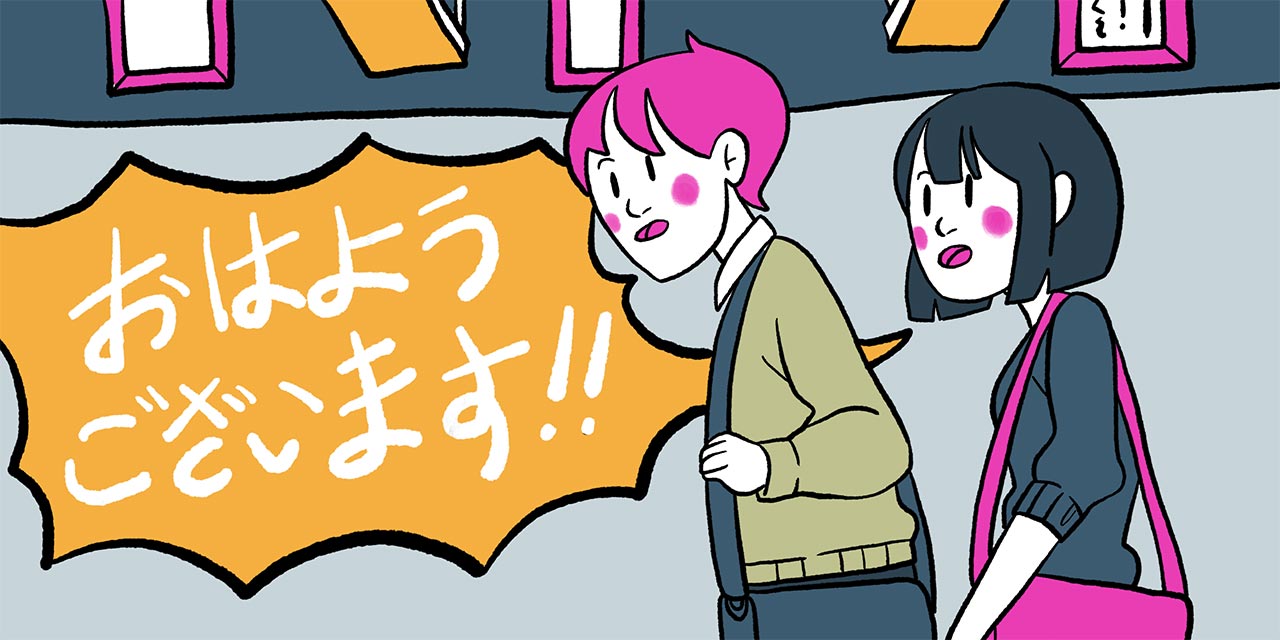
Japanese office etiquette is not terribly different from Western office manners. Basic conscientiousness, kindness, and politeness will take you 75% of the way. This list is the other 25%.
Below are 12 pieces of general Japanese office etiquette to help your relationship building as a JET Program ALT.
Jikoshoukai 自己紹介 (Self-Introduction)
In Japan, introductions are important because relationships are important. Introducing yourself properly shows you want to work well with people you’re meeting.
Your jikoshoukai 自己紹介 (self-introduction) is easy in Japanese because of the set phrases used. If you don't know these phrases, learn them before you get to Japan. We wrote a whole article focused on helping you craft and perfect your perfect jikoshoukai in Japanese.
-
hajimemashite はじめまして: This is usually translated as "How do you do?" but you’re really saying "Let’s begin [this relationship]." Only say this the first time you meet someone.
-
yoroshiku onegaishimasu よろしくおねがいします: This phrase has no true English equivalent. It literally means "Please be kind to me" or "please treat me favorably." Say this at the end of your introduction.
Using these two phrases, you can construct your jikoshoukai:
- はじめまして。 私は (your name) と 申します。 よろしく お願いします。
- My name is (your name). Please be kind to me.
If the above hiragana in the example sentence is beyond you, you should learn it before heading off to Japan. For more detailed jikoshoukai instructions, check out our jikoshoukai article.
Aisatsu 挨拶 (Greetings)
- お先に失礼します
- Excuse me for leaving before you.
Aisatsu 挨拶 (greetings) are an important part of Japanese culture. Japanese people are taught to greet each other from a young age. If someone doesn't say their aisatsu/greetings, other people will notice.
As a foreigner, your co-workers will understand if you don't do aisatsu at first. But if you go months without saying "good morning" to your colleagues, it will start to affect your working relationships.
Make sure you say these phrases at the appropriate times:
-
ohayou gozaimasu お早うございます: "Good morning" - This is used to greet someone the first time you see them that day. Since you usually see people first in the morning, you'll most often use this phrase as "good morning."
-
konnichiwa 今日は: "Hello" - This is your all purpose hello for the afternoon.
-
konbanwa 今晩は: "Good evening" - This is your hello for evening and night time.
-
osaki ni shitsureishimasu お先に失礼します: This literally means, "Excuse me for leaving before you." Say this when you leave and there are still people in the staff room working (which will be most of the time).
-
otsukaresama deshita お疲れ様でした: This means "You worked hard." Think of it as saying, "Good job today." Say this when someone leaves the staff room and you are still working.
-
otsukaresama desu. osaki ni shitsureishimasu. お疲れ様です。お先に失礼します。: When you leave and others are still working, you can be extra polite by combining お疲れ様 with お先に失礼します. Notice you're using です instead of でした at the end of お疲れ様. That's because your co-workers are still working. You're saying "you're working hard" instead of "you worked hard."
Meishi 名刺 (Business Cards)
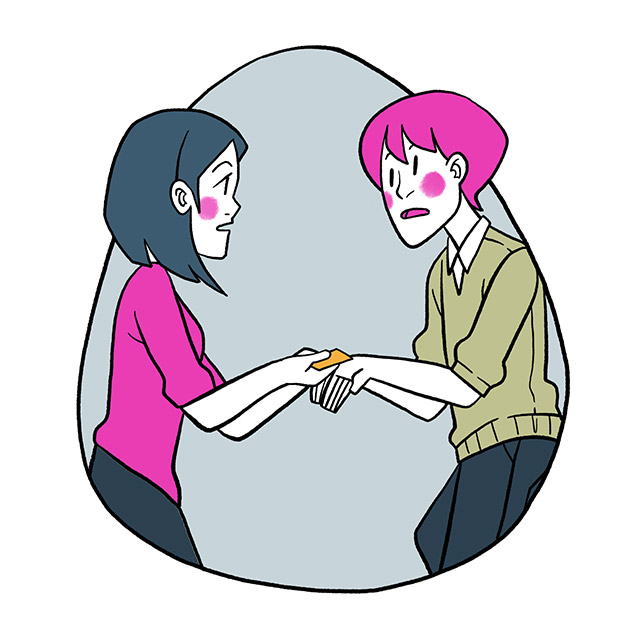
Business cards or meishi 名刺 are a big part of Japanese work culture. As a JET Program ALT you're not required to have them, and won't encounter them often. But it's important to know what to do when someone offers you their business card.
Meishi mean a lot to the people who give them. Shoving them in your pocket, or throwing them away, is a big insult. Follow these simple rules to treat Japanese business cards with respect:
-
Buy a meishi carrying case: It’s rude to put meishi in your pocket. Buy a business card case at any 100 yen shop or department store. If you don’t have a carrying case on you, it’s okay to put business cards in your wallet or purse after you’ve received them correctly.
-
Present and receive meishi with two hands: Offer your card with two hands. Make sure it’s oriented with the text facing toward the person receiving (so they can read it). Receive others' cards with two hands.
-
If you're accepting and offering meishi at the same time: Use your left hand to accept their card, still presenting yours with your right.
-
Read meishi you receive before putting them away: After you receive the card, read the person’s name and title. Pretend to be impressed with them. After this, you can put the card away.
-
Give to the most senior member of the group first: If you’re meeting your Principal and other staff at the same time, give to the Principal first, then the Vice Principal, and down the chain of command.
-
Don’t "mess with" business cards: Don’t throw or toss meishi. Don't write notes on it. Treat it as if someone gave you a birthday card.
Timeliness
Time and timeliness are understood differently in different cultures. Without getting into minute differences, Japan and Western cultures view time similarly. Kind of. Both place high importance on punctuality. However, Japan is stricter than most Western cultures.
In places like America, people expect each other to be on time. But if someone is five minutes late once or twice, it’s not a big deal.
In Japan, if you’re on time you’re late.
In Japan, if you’re on time you’re late. Make sure to arrive to work, class, meetings, and everything at least five minutes beforehand.
This doesn’t mean no one can ever be late (you’re human and so are Japanese people). But understand being five minutes late in Japan isn’t "no big deal."
If you know you'll be late, call ahead and let someone know you'll be late and when you expect to arrive. If you can't call ahead, apologize when you get to work. Explain why you were late, ensure it won’t happen again, and move on.
Dress Code
Every school's dress code is different, so you’ll have to observe other teachers and ask your supervisor about what’s appropriate work attire. Japanese work culture dress tends to be more conservative, so most likely the dress code will be at least business casual. The one thing I can say for sure: t-shirts, jeans, and shorts are an absolute no-go.
Though your situation will be unique, here's a breakdown of typical Japanese school dress code for ALTs:
1. Men
- クールビズ
- Cool biz, short for "cool business"
-
Top: A collared shirt is best. Sometimes polo shirts are okay, but usually you'll be wearing a button down shirt. If a tie fits in the collar, then it's probably a good choice.
-
Bottom: Slacks or khakis are standard. But dark colored slacks are better. No jeans, shorts, or sweatpants.
-
Other: Neckties and belts are standard. Japanese men's neckties (and other clothing items) tend to be grays, blues, and dark blues. Consider this when choosing shirts and ties. Expressing yourself with a colorful tie or facial hair is fine, but realize you'll stand out.
A few times a year, you’ll need a suit for special occasions. Navy, black, and gray suits are best. The only suit combo to avoid is white shirt + black suit + black tie. That’s reserved for funerals.
2. Women
-
Top: Blouses or sweaters are good choices. Sleeveless shirts are generally not appropriate unless covered by a cardigan. Short sleeve blouses shouldn't be too short.
-
Bottom: Bottoms should be slacks, but not jeans, leggings, or sweatpants. Skirts are fine as long as they are below the knee, and don't hug the body too much. When wearing skirts or short pants, Japanese women tend to wear stockings underneath, even if only knee-highs.
-
Other: Rules for jewelry, makeup, and painted nails vary between schools. If you're allowed to wear dangling jewelry, make sure you choose something comfortable for your active role. Some schools allow painted nails, but restrict certain colors.
During special occasions, you'll wear the clothing you wore to Tokyo Orientation. This means a dress shirt, suit jacket, and skirt or dress pants.
The exception to all this for both sexes is cool biz クールビズ (short for "cool business"). This is a certain time in summer (May to October) when people wear attire more suited for the humidity. Though relaxed, cool biz attire is still pretty formal.
For men, lose the suit jacket if you have one, and wear button down short sleeve shirts. For women, short sleeve tops, skirts, and capri pants. But no shorts for anyone. Never ever shorts.
Shoes

Japanese shoe etiquette is famous the world over. It boils down to "no shoes in the house/school/building/etc."
To be more specific, you’ll need a pair of shoes for each school you teach at. These should be brand new, used inside, never brought outside, and always left at school.
You may need a second pair for the gym, depending on the school. If you teach at three schools, you could need six pairs of indoor-only shoes.
Keep in mind, you’ll be in these shoes, on your feet eight hours a day. So shop for comfort and support. You’ll pay the price in pain if you don't.
Omiyage お土産 (Gifts)
Gift-giving is important in Japan year-round. The most important to remember in the Japanese work culture is omiyage お土産.
Omiyage are obligatory gifts given to colleagues when someone returns from a trip. It’s a way of saying "thanks for holding down the fort while I got to go away." Giving omiyage is a great way to maintain and build your working relationships. But it can count against you when you don’t.
Here are the important rules to follow when buying omiyage:
-
Buy something the group can share: Buy something everyone can dig into or have a one of. Something with individually wrapped pieces is best.
-
Ask someone where to put the omiyage for everyone: How to give your omiyage depends on the workplace. Sometimes you can leave the box of goodies on a communal table. Other times you leave one individually wrapped piece on each desk, as long as you have enough for all the desks. It depends on the office and the rules they have set up for omiyage, so ask a co-worker.
-
Buy something consumable: Avoid trinkets and coffee mugs. Look for individually wrapped cookies or sweets. In general, adult humans don’t need more stuff, but everyone enjoys food.
-
Buy a regional specialty: Bring your colleagues something they can’t easily get in their region. When arriving on JET, bring a local treat (California raisins, for example). Bringing Pocky from America, on the other hand, wouldn't not be all that special, probably.
-
Make sure it’s not too cheap or too expensive: Between 1000-5000 yen should be fine.
Omiyage are a way of saying "thanks for holding down the fort while I was away."
After buying the big, shareable omiyage for everyone, get something slightly nicer for those who have helped you. For JET Program ALTs, this would be Principals, Vice Principals, and Supervisors. Include your JTEs if you can afford it.
All individual gifts should be given in person, in private. Don’t leave it on their desk for others to see. Give the nicest individual gift to the principal.
When you give the gift, don’t be surprised if people don’t open or consume your omiyage right away. In the West, we open gifts in front of the person who gave it. In Japan, people receiving gifts often thank you and then put the gift away to open later.
Bowing
To learn absolutely everything you need to know about bowing in Japan, check out our bowing guide.
Follow the rules in the guide as best you can. But understand non-Japanese people aren’t expected to bow perfectly (even Japanese people have a hard time keeping the bowing rules straight sometimes). So do your best and follow these three basic points:
-
Form a straight line with the slope of your back and the back of your head, rather than a curve.
-
Keep your legs and hips in the same position throughout the bow. Don't stick your butt out!
-
Inhale while moving into a bow, exhale while holding the bow, and inhale again while straightening back up.
Handshakes aren't uncommon in Japan, but they're not the standard. Bowing is the best way to greet a Japanese person you don't know. Let your the person you're meeting decide if they want to shake hands.
Accepting Invitations

Japanese people, especially teachers, are notoriously busy and overworked (sometimes to the point of karoshi). So any time they offer to take you somewhere or do something with you, that’s time they carved out of their schedule.
Saying yes to most things is polite, but it will also ensure you get the most out of your JET experience.
But what about times when you want to say, but have to decline?
Reschedule immediately. "Some other time" will probably be interpreted as, "I don’t want to go," and the invitation won't be offered again. But rescheduling on the spot demonstrates you’re serious about "some other time". Pull out your calendar and find a better date right then and there.
That said, make sure to "read the air" to see if an invitation is sincere. "Come to my house sometime" can be used as a friendly expression. If the invitation comes with a date, time, and details, it's a real invite. If not, don’t force the issue.
Staying Late vs. Leaving on Time
Japanese work hours are set, but it's understood that most people will work beyond them. There are lot of reasons why Japanese people stay late at the office, more than we can get into here. But in general, staying late in Japanese work culture is seen as "working hard" and leaving on time is seen as "not working hard."
The ALT is not normally expected to stay past quitting time (check with your supervisor to be sure).
Why does staying late help you? Two reasons:
-
Staying late earns you "team points." The anchor quitting time has been set by your school. Staying later than the anchor time (every now and then) exceeds the set expectation. You're signaling that you care about the team.
-
After the students leave, the teachers let down their hair. They might break out a few snacks from their desks. There are light conversations between bursts of work. It’s not an all-out party, but it’s a definite bonding time for the teacher group. Being part of this bonding every few weeks is a good idea.
Using Vacation Days
In general, staying late is seen as "working hard" and leaving on time is seen as "not working hard."
In Japan, people have almost twice as many vacation days as Americans, but hardly go on vacation. It's part of the Japanese work ethic.
Instead, Japanese people usually use vacation days when they’re sick, rather than redeeming sick days. That's if they even take sick days. If you don't have a fever or broken bones, slap on a sick mask and fight through it.
As an ALT you’re not expected to adhere to these unspoken rules as strictly. Take vacations and use your sick days. It’s much healthier.
But when you take time off, do so with your co-workers in mind. Is your vacation during the big speech contest? Is it during final exams? Check with your supervisor to make sure you’re not leaving at an inconvenient time for the team.
Enkai 宴会 (Staff Parties)
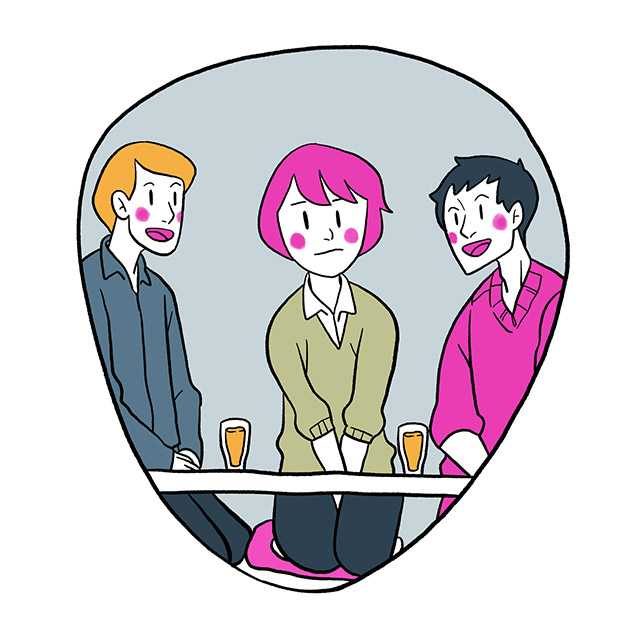
After hours socializing is an integral part of Japanese working relationships. And the greatest example is the enkai. Most schools hold several throughout the year.
Enkai are semi-formal to formal drinking parties. The cost can be anywhere from 4000-10,000 yen or more. But the experience is worth the price. There’s food, drinks, games, and conversation. But mostly drinking. This is your best chance to bond with co-workers and make good relationships better.
Enkai are relatively stress free. But here's a few pieces of enkai etiquette to ensure you have the best time possible:
-
Ask about the dress code beforehand: Enkai are formal alcohol banquets, so knowing the exact level of formality is tough. Sometimes people wear suits. Other times it's more relaxed. Ask your supervisor what you should wear, just to be safe.
-
Arrive on time: Timeliness is always important in Japan. Even at parties. Enkai especially have exact start time and end times.
-
Don’t eat or drink before everyone else: The food and drink probably won’t come out before the appointed time. But in case you find refreshments in front of you before start time, don't start drinking. There will be a kanpai 乾杯 (toast) to start the party.
-
Only refill other glasses, never your own: It’s rude to fill your own glass at enkai. Everyone fills each others' glasses. This is a great conversation opportunity for you. Try and pour drinks for the Principals and Vice Principals if you can.
-
Don’t talk about work: By this I mean, don’t pull out a pad and paper and start planning next week’s lesson. You’ll definitely talk about students, other teachers, and your experience at the school. But after hours socializing with colleagues is rarely an extended business meeting.
-
Be prepared for attention: As a foreigner your Japanese co-workers will want you to feel welcome at the party. So they may ask you to speak in front of the group, or even perform. This doesn't happen every time, but have some kind of low-key party trick ready just in case.
-
Don’t talk about enkai the next day: Japanese drinking parties can get kinda crazy. Kinda really crazy. Depending on how much people drink, some teachers may end up doing things they wish they didn’t. But what happens at an enkai, stays at the enkai. Resist the urge to rib a co-worker the next morning with, "You were so hammered last night!" It will destroy whatever bonding you did the night before.
Enkai are amazing fun, so go to as many as possible. If you don't drink, still go. It’s completely acceptable to ask for tea or juice. The food will be top notch, so try everything. And when the party is over, the party's not over. Teachers split up into grades, subject, age group, or whatever and go to a nijikai 二次会 (second party) at an izakaya or karaoke place. The nijikai is much less formal (everyone’s already drunk), and the bonds you form get stronger.
The next day, you may notice greetings from teachers who were previously reserved. The buddy-buddy rapport from the enkai will most likely be gone (until the next enkai), but you’ll have a better foundation for working together in the future.
Advice for ALTs
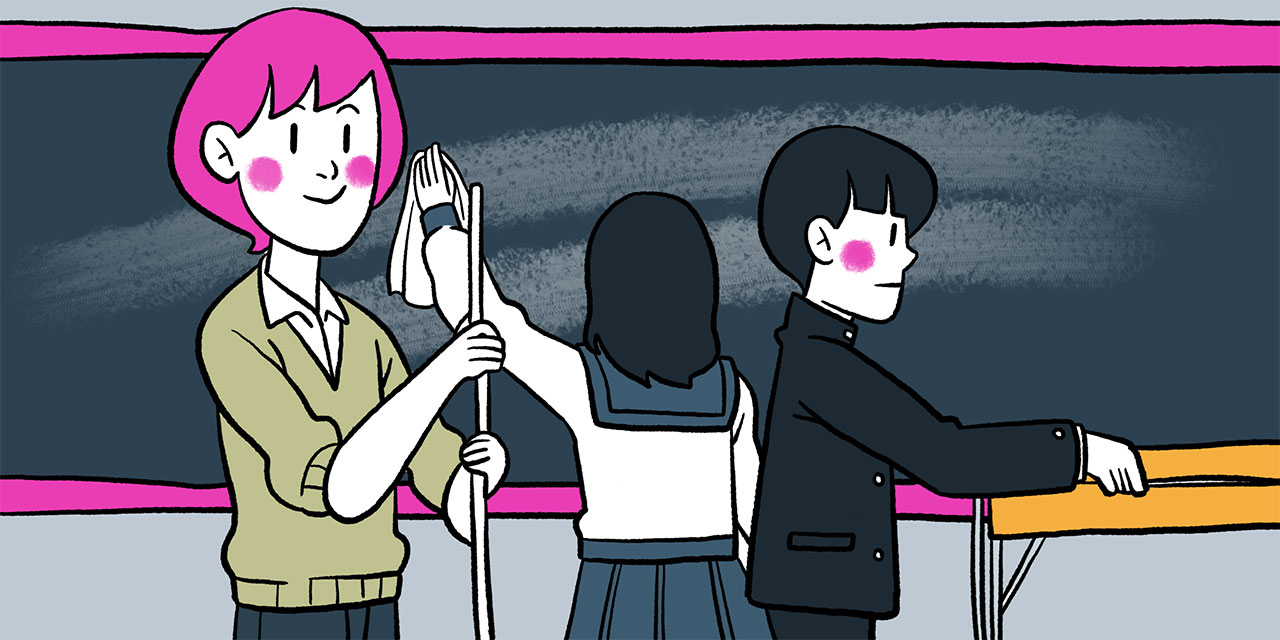
The etiquette above applies to Japanese work environments in general. But the next three points are aimed specifically at ALTs. These are pieces of niche advice of the English teaching situation.
Join in Lunch Time Cleaning
A big difference between Japanese and Western schools is Japanese schools don’t usually hire janitors. Instead, the students clean the school.
School cleaning time is normally during lunch. You won’t be able to miss it. Special "cleaning time music" is played over the loudspeaker, and kids will be running around with brooms, rags, and dustpans.
Make sure to grab a broom and join in. You don’t want to be the only one sitting at your desk while everyone around you is cleaning. Sweeping and scrubbing alongside the kids will show you’re part of the group. Plus it gives you a great chance to chat with students and get to know them better.
Don't Mess Around at Your Desk
All teachers have "planning periods" where they're free to prepare for upcoming lessons. The same is true for ALTs. But sometimes you’ll be given more time than you need. You'll plan two weeks worth of lessons, and… then what?
As the outsider, it can be hard to tell when you've crossed the line between micro-breaks and goofing-off.
In the beginning, you’ll use the time wisely, studying Japanese or padding your arsenal of emergency lessons. But slowly you'll be tempted to use this time for leisure. It happens to everyone. Many ALTs end up reading books and manga. They may draw pictures, surf the internet, or even watch movies.
Is this bad behavior? Not necessarily. But as the outsider, it can be hard to tell when you've crossed the line between innocent micro-breaks and flagrant goofing-off.
I drew pictures for worksheets and lessons. But over the course of a year, it transformed into drawing for fun. Eventually I was drawing whole comics pages at my desk. It just happened over time.
Eventually a teacher I worked with told me I shouldn’t draw at my desk. Considering Japanese people aren’t usually so direct (especially true in this teacher's case), I knew it was important. I was thankful she saved me from future (and oblivious) embarrassment.
Don't Correct Teachers in Class
English is a second language for your JTEs. You may catch them making mistakes from time to time. But what if they accidentally teach a mistake to the students?
This is a dilemma for the ALT. You can’t let the students learn wrong information. But calling out the teacher in front of the students would put them in a bad spot. Saving face is important in Japan.
Don't point out the mistake in class. Instead, help your co-teacher understand the mistake away from other teachers and students. You’re still doing your duty as an educator, while preserving the team-teaching relationship.
Don't Do Things Students Can't Do
Find out things students can’t do. You probably can’t do them either.
Teachers in Japan try to set a good example for the students and show solidarity with them. This means no juice, candy, snacks, jewelry, perfumes, smartphones, or air conditioning. If the students can’t have it, usually the teachers can’t either. School time is serious time, for everybody.
Communication

Etiquette and manners are indirect communication. But direct communication, like verbiage and body language, may be even more important.
Naturally, a lot of the verbal and nonverbal codes we use in English won't apply in Japanese. You'll have to learn some new rules. These are few to set you on the path to success in Japanese work culture.
Aizuchi 相槌
- 相槌(あいづち)
- interjections indicating that one is paying attention
Aizuchi 相槌 are a type of "Japanese phatic expression." These are verbal cues which show you’re paying attention and interested in what the speaker is saying. They’re equivalent to the English "yeah," "uh-huh," and "I see."
To know exactly which Japanese aizuchi you should be using, check out our aizuchi article. The key thing to remember is Japanese listeners use aizuchi more than their American counterparts. This results in an almost constant stream of "はい, はい, はい, はい, はい…" In contrast, English speakers tend to say "uh-huh" only every other sentence or so.
"Reading the Air"
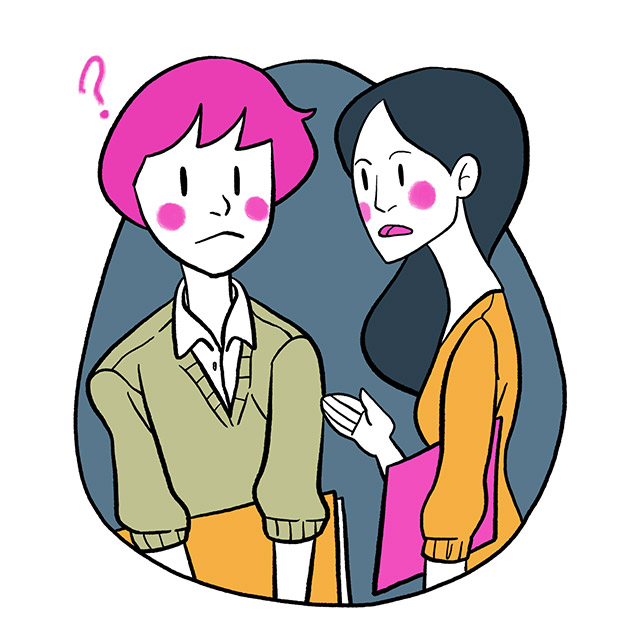
In Japan, people under-explain, expecting the listener to infer. In the West, people over-explain to make sure everything is clear.
A Japanese phrase that encapsulates this is 1言えば10知る, or "say one, understand ten.". It means when the listener and speaker are in sync, little needs to be said. This isn’t an innate ability Japanese people have. It’s taught to them from a young age.
Japanese people who don’t easily infer meaning from conversations are said to be "KY." KY is an acronym for kuuki yomenai 空気読めない, meaning "can’t read the air." This describes someone who can’t read a situation or infer the mood someone is projecting into a conversation.
How can you get past this communication difference?
Check out what Rochelle Kopp has to say. She advises using clarifying questions to draw out any "implied meaning" you could be missing. When you communicate, boil down your thoughts to key points and be concise.
Speaking Carefully
The best way to communicate to Japanese people is in Japanese. But what about when you have to use English? It's your first language and their second.
Rochelle Kopp recommends speaking slowly and carefully. Gauge your speed with each person, so you don’t slow down to an insulting degree. Reduce your speed a bit when someone doesn't understand you the first time.
Also, find ways to simplify your English. Instead of saying "the vast majority of the population," say "most people." Cut out idioms and slang.
Pay attention to what English words Japanese people substitute. For example, you might hear "these days" instead of "recently" because of the tricky "l" and "r" sounds. I've heard the phrase "I could notice" used instead of "I've noticed." Tailoring your English to these uncommon (but not incorrect) phrases can help you make yourself understood.
Misunderstandings
Misunderstandings are going to happen. If something causes you offense, try and press pause on your internal defense mechanism (easier said than done). Try and remember, 99% of the time, Japanese people are not trying to offend or make you uncomfortable.
They don’t understand all the subtext of your language and you don’t understand all the subtext of theirs.
A quick story: When my JTE was advising me not to draw at my desk (see earlier story), she said, "From now on, you had better not draw at your desk." The phrase "you had better not" is usually used to scold someone in English. So naturally I felt defensive (not to mention embarrassed at being called out).
But at the time, I didn't know "you had better" is commonly taught to Japanese people as a translation for the phrase "~のほうがいい." This Japanese phrase can be used for suggestions of varying intensity. But the English "you had better" is mostly reserved for intense reprimand.
Bottom line: If a Japanese person says something that offends you, remember they don’t understand all the subtext of your language and you don’t understand all the subtext of theirs.
Implementing New Ideas
After you’ve been teaching for a few months, you'll get ideas. Amazing ideas! But when you present them to a JTE, it your suggestions may seem roadblocked.
What gives? In Japanese work culture, decisions need consensus before progress can be made. On top of this, Japanese teachers are infamously overworked sometimes more so than people in other professions. So that could also be causing delays.
So the good news is, they (most likely) don’t hate your idea. The bad news is, it will (most likely) take a long time to gain traction. There are strategies you can use to get your idea approved. But be prepared to wait no matter what.
Key Concepts
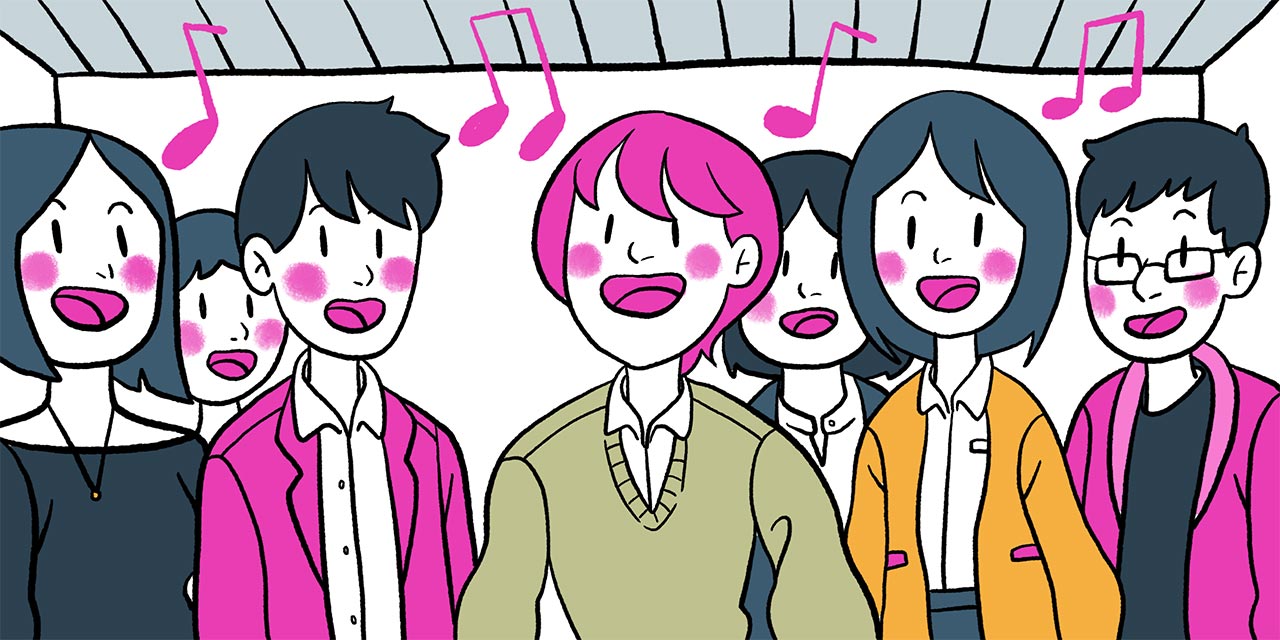
All the advice up to this point has been actionable, things you can put into practice right away. But understanding cultural subtext behind the actions can make them feel more natural (or at least tolerable). Tapping into the why of Japanese workplace culture can help you adapt in the long term.
Collectivism
In Japan, self is defined through its interaction with others and not merely through the force of individual personality.
One of the most important concepts to understand in Japanese culture is emphasis on the group. In short, this means the needs of the group are placed above the needs of the individual. Or an individual has a duty to fulfill the group.
But the common misconception is Japanese people suppress their individuality or love to conform. Japanese people have individual tastes and opinions. Just look at Chiebukuro or What Japan Thinks for proof. Also, new research and writing is proving modern Japan isn't as collectivist as it used to be.
One of the best ways I’ve seen Japan's collectivism explained is in Ronald E. Dolan and Robert L. Worden’s country study written for the Library of Congress:
Japan, like all other societies, has conflicts between individual and group. What is different from North American society is not that the Japanese have no sense of self but rather that the self is defined through its interaction with others and not merely through the force of individual personality.
Every society has a dance between individuals and the group. We all want to belong, yet we all want to express ourselves. The difference is in how we do this and to what degree. Learning Japan's approach to this group-individual relationship and comparing it to your own will be helpful to your growth as an ALT and as an individual.
Honne & Tatemae
Honne and tatemae has been discussed in many circles (we even did a little satirical video on it). On one end you have tatemae 建て前, or the attitude you show outwardly. On the other end is honne 本音, or your true opinion.
When first learning these Japanese words, some get the impression Japanese culture values deceit. This isn’t true. Every culture has the honne-tatemae concept, but not every culture has words for it.
Everyone hides their private thoughts to a certain extent. That’s why in English we say someone "has no filter," when they share their 本音 (honne) at inappropriate times.
Japan's specific verbiage for this idea reveals a value placed on social harmony. In practice, Japanese people may decide to keep quiet in situations where Westerners would prefer to speak their minds.
Just like collectivism above, Japan is using the same social tools we are. The difference is in how they use them and when.
Senpai & Kouhai
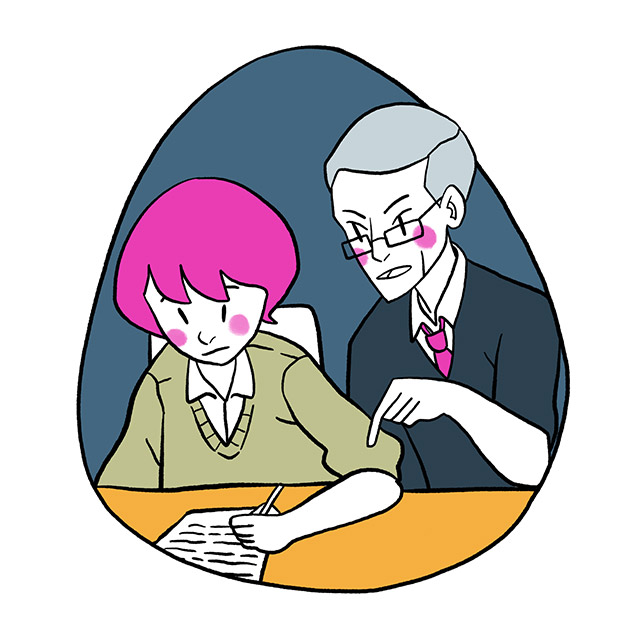
Hierarchy in Japanese culture deserves an entire article of its own. But a good summary is the senpai/kouhai relationship.
In Japan, a senpai is a senior member of a group (classroom, workplace, etc.). A kouhai is a junior member. The senpai is responsible for the kouhai, helping them navigate the workplace, learn the culture, and get better at their job. As an ALT, you’ll almost always be the kouhai.
Note that senpai/kouhai status is based on experience more than age. If you join a new workplace, those younger than you are your senpai because they've been there longer.
At its core, this is a relationship. No one is going to assign you a senpai. So keep an open mind, be polite, be humble, and you’ll get more support and cooperation from those "above" you.
Amae
- 甘え(あまえ)
- depending on others
To get a more complete idea of how amae 甘え works in Japanese culture (especially education) read Koichi’s article.
The theory of amae was put forth by psychologist Takeo Doi. It suggests that Japanese society’s willingness to indulge people in childish behavior (from time to time) allows them to endure higher levels of stress, thus learning more, thus performing at higher levels. It’s a kind of group compassion.
Though Doi’s theories are debated, his ideas are worth learning. They say a lot about how Japanese people see themselves. And how people see themselves always affects how they act. Sound or not, Doi's amae theory can teach you a lot about navigating Japanese society.
Reliability vs. Performance
Japanese work culture tends to emphasize reliability and participation over results.
This can be frustrating when the lesson you crafted is a slam dunk in class, and your JTE doesn't say anything. In the West, we expect praise when we do well. We like feedback to grade our performance. But you won't get it as often in Japan.
The upside: less pressure on you, the individual. The group succeeds and fails together. Doing a good job consistently means more than occasionally knocking it out of the park.
You're Going to Screw up (and That's Okay)
Even if you try your absolute best, you won’t get everything right 100% of the time. Eventually something will go wrong and you’ll be late. Or say the wrong thing. Or bring the wrong gift.
It’s fine. Have some self-compassion, learn from the experience, and move on.
Remember, your goal as a JET Program ALT isn’t to rewire your behaviors and become Japanese. It's to be a representative of your country.
So represent. Follow etiquette to be considerate of your Japanese hosts. But be an ambassador. Find a balance between conforming for the sake of harmony, and demonstrating the kindness and etiquette of your home country.
